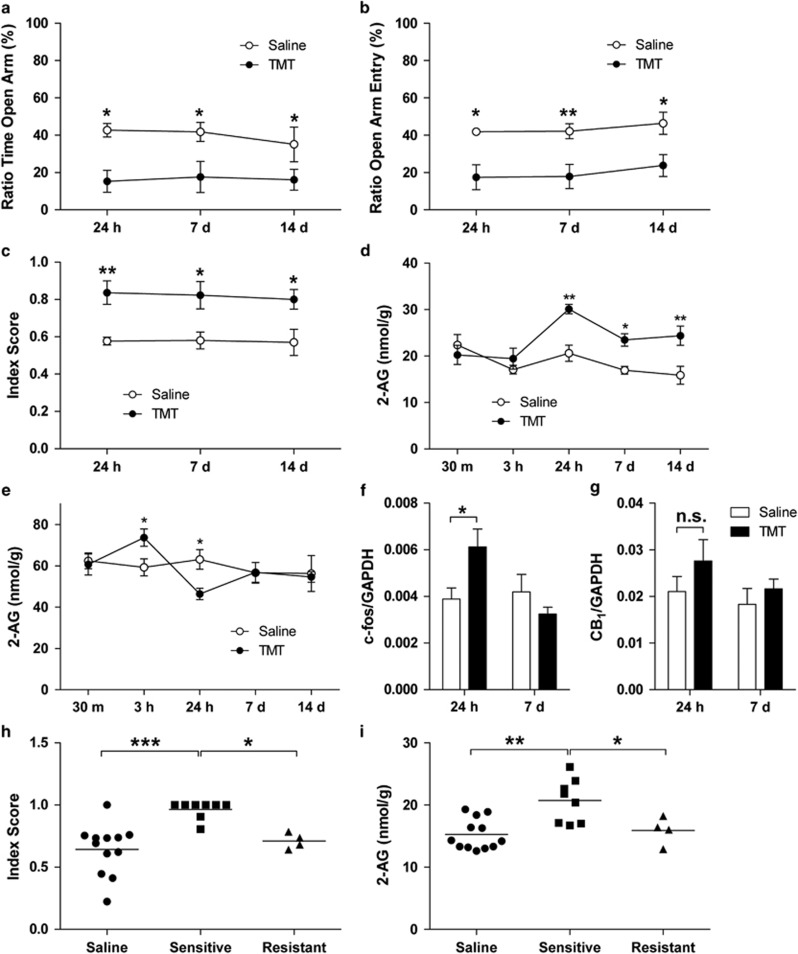Figure 1.
Rats exposed to TMT show significantly increased anxiety-like behavior and changes in 2-AG mobilization. (a–c) Rats were subjected to EPM 24 h, 7 days, or 14 days after exposure to TMT. (a) Ratio of time in open arm, (b) ratio of open-arm entry, and (c) anxiety index indicate that exposure to TMT generates long-term anxiety in rats. The anxiety index was calculated as 1−(average of percent time in open arm and percent open-arm entry) (n=8 rats per group). (d) 2-AG content remained elevated in the amygdala for at least 14 days (n=6 rats per group). (e) Fluctuations in 2-AG level were observed in the hypothalamus for the first 24 h (n=6 rats per group). In addition to 2-AG content, (f) we observed an increase in c-fos mRNA expression in the amygdala at 24 h but (g) no significant change in CB1 receptor gene expression. The mRNA data are shown in relative quantity (copies) ratio to GAPDH as a normalizer (n=6–8 rats per group). (h, i) We parsed out TMT-resistant and TMT-sensitive rats. (h) Anxiety index of TMT-resistant and TMT-sensitive rats indicates that TMT-sensitive rats show heightened level of anxiety-like behavior. (i) TMT-resistant did not exhibit increased levels of 2-AG 7 days after the TMT exposure. N=4–12 rats per group. Results are expressed as mean±SEM; *P<0.05, **P<0.01, ***P<0.001. CB1, cannabinoid receptor 1; EPM, elevated plus maze; n.s., not significant; TMT, 2,5-dihydro-2,4,5-trimethylthiazoline.

